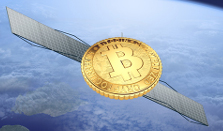i) The mass of the sun is 1.989 x 1030 kg that is 333,000 times the mass of the Earth. Sun has 99% mass of the entire solar system.
ii) All the space is completely silent, so one can live there without any noise, though it’s not possible.
iii) More energy from the sun hits Earth every hour than the planet uses in a year.
iv) One Million Earths can fit into the Sun. Sun is really big.
v) Space is not that far away. If you can drive upwards you can reach the space less than an hour.
Great post. I'd like to add some more facts.
- The solar system is more or less 4.6 billion years old.
- If you were to in space to someone who was right next to you they would not be able to hear you.
- Uranus has 27 moons that we know of.
- You have approximately a 1 in 5 billion chance to be killed by space debris.
- There are 166 moons in our solar system.
- The mass of the moon is approximately an 80th of the mass of the earth.
- The Galaxy that is located closest to us is the Andromeda Galaxy.
- Buzz Aldrin’s mother’s maiden name was Moon.
- Yuri Gagarin, the first human to ever go into space, ironically died in a plane crash.
- The first woman to ever go in space was a Russian woman called Valentina Tereshkova.
- February 1865 and February 1999 were the only months in recorded history that didn't have a full moon.
- Our moon is moving away from the earth at a rate of 1.6 inches (4 centimeters) each year.
- The sun is the largest object in our solar system.
- The ISS is the largest object that has ever been sent into space.
Here are some more..
All of space is totally silent.
There are billions of galaxies in space. Our Milky Way is just one of those.
A day on Mercury equals about 59 days on our earth.
A light year is a measurement of distance, not of time.
It is estimated that the universe is more than 13 billion years old.
There are about 300 billion stars in our Milky Way.
Mercury is closest to the sun and Neptune is furthest away from it.
Venus is the hottest of our planets.
The earth is further away from the sun in July than it is in January. Odd huh?
Mars has two small moons.
Asteroids greatly vary in size. The can be just a few meters, or they can be hundreds of kilometers.
A day on Venus is longer than a whole year on earth.
If you walk on the moon, your footprints will remain there for eternity, pretty much.
If you would put saturn in water, it would float.
The Big Dipper is an asterism, not a constellation.
Pluto is about 2,368 kilometers around.
Jupiter has 67 moons.
Mercury does not have any moons.
If you fell into a black hole, you would become long and skinny.
Nice additions. And more..
One million earths could fit inside the sun, that's how big it is.
Neutron stars spin a a rate of 600 times a second.
The sun is 99% of our solar system's mass.
Space is not as far away as many might think. It is only 100 km above the earth.
Mercury does not have any atmosphere.
The word astronaut comes from the Greek words astron and nautes. Astron means star and nautes means sailor.
The Apollo crew didn't have life insurance. (Interesting indeed!)
Voyager 1 carries messages for aliens.
Saturn was first recorded in the 8th century BC. It has 62 moons.
Jupiter has 67 moons and 4 rings.
The moon orbits the earth in 27.3 days.
Mars was first spotted by Egyptian astronomers.
Pluto has 5 moons and its surface temperature is -229 degrees Celsius and its diameter is 2,372 kilometers.
Venus is the hottest planet in our solar system, its temperature is 450 degrees Celsius.
Mars is the most likely planet to live on, other than the earth.
There may be a planet that is made out of diamonds.
If two pieces of the same metal would collide in space, they would bond forever.
The biggest known star currently is UY Scuti
It is estimated that there are 70 billion trillion stars in the observable universe (No idea how they estimate that)
Galaxies come in different shapes and different sizes.
Mars is the 4th planet from the sun.
The circle that a planet makes around the sun is called a revolution.
Comets are like the snowballs of space. The consist of frozen water and gas, and also dust and rock.
A day on Mercury equals 60 days on earth.
There are at least two lunar eclipses every year.
A blue moon is the second full moon in a month. It's rare, hence the expression 'once in a blue moon'.
The Haley comet is the earliest recorded comet (I remember when it passed by the earth).
Mars is the second smallest planet in our solar system.
Titan is the name of the biggest moon that is orbiting Saturn.
The life spam of a star depends on how much fuel it has.
The color of a star depends on its temperature.
Proxima Centauri is the star that is nearest to earth (not counting the sun of course), but it's still 4.2 lightyears away from us.
The moon does not have a dark side.
Working

